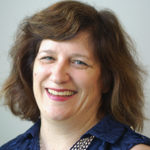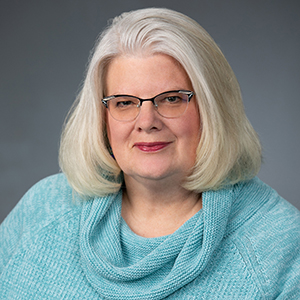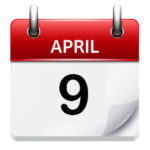ConVEx Minneapolis Presentations
The ConVEx Minneapolis program offers career-empowering knowledge, practical solutions, best practices, and the best networking in the industry.
IMPORTANT PROGRAMMING NOTE
The lineup and schedule posted here are based on current commitments from presenters and are subject to change.
Monday ~ April 8, 2024
AI Panel: Should you or shouldn't you
Dawn Stevens, Comtech Services; Val Swisher, Content Rules; Rob Hanna, Precision Content; Sarah O’Keefe, Scriptorium




Building a Business Case for Content Initiatives
Do you think it’s obvious that investing in content management now will save your company money in the long run? Are you frustrated when management doesn’t instantly agree?
Building a business case for resources can be challenging, especially if you have few (if any) credible industry metrics to quote.
This session includes case studies, metrics, and hard-won lessons learned about how to build a business case to fund content initiatives.
Jack Molisani, ProSpring Technical Staffing

Radical Content Experience Change Requires Radical Collaboration
We all have experience working cross-functionally to deliver excellence. But how do you make substantial changes to an experience that millions of users are already familiar with, while ensuring the company’s new vision is met?
In this session we’ll share our story of iteratively upgrading our doc site’s UI and codebase. By having diverse minds come together towards a common goal, we were able to lay the groundwork for future enhancements, improved performance, and a more agile and responsive website that resonates with our brand identity.
Beth Lemesany & Aaron Davidson, ServiceNow
Tom DeBeauchamp, Zoomin
 Beth Lemesany is the manager of the Product Content Engineering team at ServiceNow with 12 years in the TechPubs community. Beth and her team are dedicated to driving innovation at ServiceNow to enhance how internal partners reuse content so that customers can have a consistent experience across ServiceNow web properties, while enhancing the documentation writing and build processes for ServiceNow content creators.
Beth Lemesany is the manager of the Product Content Engineering team at ServiceNow with 12 years in the TechPubs community. Beth and her team are dedicated to driving innovation at ServiceNow to enhance how internal partners reuse content so that customers can have a consistent experience across ServiceNow web properties, while enhancing the documentation writing and build processes for ServiceNow content creators.
 Aaron Davidson is a Senior Product Content Engineer and Product Owner at ServiceNow with 14 years in the TechPubs community.
Aaron Davidson is a Senior Product Content Engineer and Product Owner at ServiceNow with 14 years in the TechPubs community.

Tom DeBeauchamp is the Director of Customer Success at Zoomin where he helps enterprise customers get as much business value as possible out of Zoomin’s products. As a former Program Manager in Information Development, he has the unique vantage point to understand the needs, pains and value of documentation teams.Prior to his role at Zoomin, he spent over three years managing cross-functional information experience programs at McAfee. He also spent 8 years at Bank of America delivering highly complex technology solutions.
Users Have Simple Needs, They Just Require the Best Content
Do you know if the technical content you are creating is right for your users? Do you know if they found it useful? How many times have you published content and hoped for the best? Join me in this session, where I’ll share how we, at OutSystems ensure that we are spending our time creating the most relevant content, and the most useful one. I’ll walk you through Knowledge Mapping, metrics, user-centric content and how can you within a product organization become the owner of your backlog instead of just working on whatever the product is pushing out.
Paulo Cardoso Ferreira, OutSystems
 I have been leading tech writing teams in telecommunications, heavy machinery, and primarily in the software world for more than 10 years now. At the moment I’m leading all the knowledge management and technical content strategy for OutSystems Product Documentation and Online Training. A deep thinker, and an incurably curious person, I love to spend my time thinking about how to solve big problems, or learning something new. Because a career is just a collection of the random that the world throws at you, I was also an awarded copywriter and an almost famous stand-up comedian at some point.
I have been leading tech writing teams in telecommunications, heavy machinery, and primarily in the software world for more than 10 years now. At the moment I’m leading all the knowledge management and technical content strategy for OutSystems Product Documentation and Online Training. A deep thinker, and an incurably curious person, I love to spend my time thinking about how to solve big problems, or learning something new. Because a career is just a collection of the random that the world throws at you, I was also an awarded copywriter and an almost famous stand-up comedian at some point.
Is AI Going to Take Technical Writers’ Jobs?
AI can be scary. Professionals in almost every industry are wondering how the advent of GenAI is going to impact their job. Content professionals may be particularly concerned given that a robot can now create reams of content within seconds.
But, rather than posing a threat, the advent of Generative AI actually puts technical communicators in a position of more power, influence and impact than ever before.
Join this talk to learn:
- How the role of technical communicators may change – for the better
- How GenAI makes the techcomm function more critical than ever
- How to upskill your team to prepare for this pivot
Paul Maass, Zoomin

Paul Maass has worked with the world’s leading organizations on self-service initiatives and methods to better leverage knowledge since he joined Zoomin in 2020. He has helped companies leverage the full corpus of product information created by organizations to delight customers, empower them to self-serve, and reduce unnecessary support costs. Prior to his time at Zoomin, he spent time as Head of Sales and Account Management in organizations focused on content personalization and content delivery on mobile devices for customers on the go.
Selling DITA To Management, Not Once, But Twice
Our structured content project vision started in 2007 and took 7 years to implement. It led to a successful product content web delivery solution and then an acquisition happened and then we had to do it all over again.
This is our story of how we realized we had a problem, found the solution, and got management to buy into our plan. The journey took us from InDesign to structured content / authoring and web- delivery. We faced challenges along the way including hitting the reset button with the acquisition.
Bob Garber, Life Fitness
Nenad Furtula, Bluestream

Bob Garber is the DITA Information Architect for Life Fitness. Bob is responsible for the DITA-OT plugins, Information Model, training, implementing new DITA elements and procedures, software support and upgrades. 10 years of experience with DITA, including XML, XSL-FO, HTML, and CSS. 21 years of experience in technical communications. As well as a degree in Electronic Engineering.

Nenad Furtula is a Partner and CEO at Bluestream Content Solutions. Nenad has been working with XML and bringing XML related products, technologies and organizations to market for over 20 years. Passionate about structured content application in technical product documentation and the impact on the end-user. Nenad holds a BBA from Capilano University and MSc (Computer Science) from Dalhousie University.
Connecting the Dots with Customers: Our customer engagement journey
How do you connect your content creators with your content users? Is it worth the effort and investment or even the risk that it might completely alter your current roadmap? At Workday we’d respond with a resounding “Yes!”
Learning what information experience customers truly want and need vs. what we think they need can be humbling. But finding creative ways to connect with customers, listening to them, and exploring new paths together can be immensely rewarding and revitalizing for your team and your customer base. We’ll share the Workday Information Experience team’s journey to build a customer engagement plan, shifting writers’ mindsets towards a Jobs-To-Be-Done perspective, and our plans to expand further.
Tara Heisig and Selena Spain, Workday
 Director, Technical Writing – Information & Learning Experience, Workday
Director, Technical Writing – Information & Learning Experience, Workday
As a Director of Technical Writing, Tara leads a team that is responsible for the creation, delivery, and user-experience of product documentation for Workday customers. Throughout her 25+ year career in technical writing, Tara has both written content and led organizations to provide knowledge that centers on customers and their needs, enabling their success.

Senior Manager, Technical Writing – Information & Learning Experience, Workday
As a Senior Manager of Technical Writing, Selena leads a team responsible for creating Workday product documentation focused on content solutions that support customer business goals. She also leads the Workday Information Experience team’s customer engagement program as well as various initiatives intended to assess and address customer needs.
Elevate & Innovate: The holistic blueprint for unparalleled content
This presentation unveils a strategy that fuses creativity, technology, and strategy to transcend conventional technical content creation. This session dives into the key components of high-quality content. We will explore how to establish and maintain quality standards using practical tools and techniques for content quality assurance. The session will include real-world examples, good and bad, and actionable insights. Learn to implement this approach regardless of your role. Join us and plan to share your insights and best practices as we look to unlock the secrets of crafting content that stands out, elevates quality, fosters innovation, and drives impact.
Pam Noreault, Ellucian
 Pam Noreault is a Principal Information Architect at Ellucian. She has over 25 years of experience in technical communications, education, and management. She specializes in content strategy, customer engagement, content conversions, and social networking strategies. Pam has an undergraduate degree in education from The Ohio State University and a master’s degree in English and Professional Writing from Wright State University. When she’s not trying out new gadgets or trying to innovate in the business world, she’s hiking in the mountains of Maine and listening to audiobooks.
Pam Noreault is a Principal Information Architect at Ellucian. She has over 25 years of experience in technical communications, education, and management. She specializes in content strategy, customer engagement, content conversions, and social networking strategies. Pam has an undergraduate degree in education from The Ohio State University and a master’s degree in English and Professional Writing from Wright State University. When she’s not trying out new gadgets or trying to innovate in the business world, she’s hiking in the mountains of Maine and listening to audiobooks.
AI Took My Job (To the next level)
Generative AI is a game-changer for technical writers. While many are concerned about being replaced by AI, this session offers a different perspective by showcasing how AI can empower technical writers. This presentation, ‘The Technical Writer’s Unlikely Ally: Generative AI for Documentation,’ explores how leveraging high-quality AI enhances productivity by smartly delegating mundane tasks, freeing up more time to work on high-value activities. Additionally, it reveals how AI can bridge the gap, making DITA more approachable for non-DITA experts.
By showcasing the benefits of combining AI and technical writing, this session shines a light on the transformative potential of AI in the documentation landscape, fostering efficiency and accessibility, while empowering authoring teams to achieve new proficiency levels.
Patrick Bosek, Heretto
 Patrick is a co-founder and CEO of Heretto, an industry-leading SaaS solution for content operations. Since beginning Heretto in 2005, Patrick has worked on a wide range of projects, all focused on improving authoring, production, and distribution of content. Patrick is a software industry professional specializing in developing, productizing, and solving problems with product content software. He is a skilled developer, thoughtful leader, and passionate customer advocate.
Patrick is a co-founder and CEO of Heretto, an industry-leading SaaS solution for content operations. Since beginning Heretto in 2005, Patrick has worked on a wide range of projects, all focused on improving authoring, production, and distribution of content. Patrick is a software industry professional specializing in developing, productizing, and solving problems with product content software. He is a skilled developer, thoughtful leader, and passionate customer advocate.
Structured Content Authoring Made Easy with Etto, the Heretto Copilot
Heretto will introduce Etto, the Heretto Copilot, and demonstrate how this generative AI documentation expert can help writers create content faster, manage documentation more efficiently , and learn DITA XML in real time.
Patrick Bosek, Heretto
 Patrick is a co-founder and CEO of Heretto, an industry-leading SaaS solution for content operations. Since beginning Heretto in 2005, Patrick has worked on a wide range of projects, all focused on improving authoring, production, and distribution of content. Patrick is a software industry professional specializing in developing, productizing, and solving problems with product content software. He is a skilled developer, thoughtful leader, and passionate customer advocate.
Patrick is a co-founder and CEO of Heretto, an industry-leading SaaS solution for content operations. Since beginning Heretto in 2005, Patrick has worked on a wide range of projects, all focused on improving authoring, production, and distribution of content. Patrick is a software industry professional specializing in developing, productizing, and solving problems with product content software. He is a skilled developer, thoughtful leader, and passionate customer advocate.
Love Your Curmudgeon: Embracing your least likely partner in transformation
We all know that one teammate who digs their heels in when confronted with even the tiniest change. As challenging as this may be, the curmudgeon plays an important role in any organization. Rather than butt heads or flat out ignore their input, you’ll supercharge your project if you can win over and collaborate with your curmudgeon. In this presentation, Amber Swope and Dan Schommer talk about the curmudgeon’s value, what motivates them, and key strategies to engage them toward the success of any project.
Amber Swope, DITA Strategies
Dan Schommer, Intuitive Stack

Amber Swope is an internationally recognized DITA expert and information architect. With over 20 years of experience in information development and 15 with DITA, Amber aids organizations in creating opportunity through IA. She helps teams build scalable IA solutions to future-enable their content and mentors team members to advance the IA as it evolves to meet new business needs.
 With over 20 years of project and program management experience working on large capital projects and programs, Dan Schommer has led cross functional teams in planning and executing building projects throughout the US and Puerto Rico with a total budget near $500M. Cross functional teams have included partners in Construction, IT, Design, Architecture, Marketing, GNFR and Deployment.
With over 20 years of project and program management experience working on large capital projects and programs, Dan Schommer has led cross functional teams in planning and executing building projects throughout the US and Puerto Rico with a total budget near $500M. Cross functional teams have included partners in Construction, IT, Design, Architecture, Marketing, GNFR and Deployment.
MyContent Portal - Unifying and automating enterprise content operations
MyContent Portal is a cornerstone of Avalara’s publishing ecosystem, optimizing content management, and enhancing customer success while reducing costs. MCP established a robust architecture with services including localization automation, content planning, and content analytics. The platform streamlines content management processes, reduces administrative tasks, and provides actionable content quality insights. MCP offers an integrated content plan and journey mapping system, aligning with Avalara’s goal of delivering the right content to the right user at the right time. MCP also automates the management KCS workflow, promoting knowledge sharing and self-service. MCP introduces industry-first innovations by centralizing and automating numerous content processes, such as content analytics, planning, and publishing. The platform is an ambitious effort to set new industry standards in automated content management.
Michael Iantosca, Avalara

Michael Iantosca is the Senior Director of Content Platforms at Avalara Inc. Michael spent 38 of his 42 years at IBM as a content professional and pioneer – leading the design and development of multiple generations of advanced content management systems, technology, and processes that began at the very dawn of the structured content revolution in the early 80s. Dual trained as a content professional and systems engineer, he led the charge building some of the earliest content platforms based on structured content. Michael was responsible for forming the team at IBM that developed DITA XML.
Create a Healthy Content Ecology with this One Weird Trick
Technology makes it easy to create enormous amounts of content. In fact, most organizations create oodles more content than they destroy. Employees are actively prevented from deleting content. Teams hold on to old content “just in case.”
Worse, we force customers to surf through an ocean of content to try to find the information they need. And yet, we’re bringing Generative AI on board to create even more content!
Our content ecology is out of balance. To manage content at scale, organizations need to embrace a mindset of content consciousness. By reducing waste and caring for your digital environment, you can help keep content assets relevant, easy to find, and valuable to customers and the enterprise.
Regina Lynn Preciado, Content Rules
 Regina Lynn Preciado is the Senior Director of Content Strategy Solutions at Content Rules. She leads content strategy teams to help our customers adopt structured content successfully. Whether the business objective is to reduce risk, streamline process, deliver personalized experiences at scale, or prepare for AI, Regina has helped organizations of all sizes achieve their content reuse and automation goals. She lives a dogspotting lifestyle.
Regina Lynn Preciado is the Senior Director of Content Strategy Solutions at Content Rules. She leads content strategy teams to help our customers adopt structured content successfully. Whether the business objective is to reduce risk, streamline process, deliver personalized experiences at scale, or prepare for AI, Regina has helped organizations of all sizes achieve their content reuse and automation goals. She lives a dogspotting lifestyle.
GenAI: Promises vs tech doc realities
After the initial excitement and scrutiny, pioneers have uncovered and implemented promising applications of GenAI in Technical Documentation across their workflow, from content creation to validation, translation, publishing, searching, and reading. A few months on, have these innovations met the expectations they initially set?
This session delves into the most promising GenAI use cases in Tech Doc, and the pragmatic challenges encountered in deploying GenAI solutions. Join Fabrice Lacroix, CEO of Fluid Topics, for an insightful session rooted in two decades of research and development in Language Models (LLM) and AI, along with recent AI projects within the industry.
Fabrice Lacroix, Fluid Topics

Fabrice Lacroix is a serial entrepreneur and a technology pioneer. He has been working for 25 years on the development of innovative solutions around search technology, content enrichment and AI. He is the founder of Fluid Topics, the leading Content Delivery Platform that reinvents how users search, read and interact with technical documentation.
Similarities: Documentation Writers and Software Engineers
The aspects of a technical writer’s job (especially a tech writer who is using standards that have lots of potential for reuse, like DITA XML) are quite similar to many of the aspects of a software developer’s job. We will go through a list of concepts like Version Control, Accessibility, Content Reuse, User Interface, Translation, Terminology and discuss about the way in which both of these jobs (which may seem incompatible with each other at first) would utilize such concepts.
Radu Coravu, Syncro Soft/Oxygen XML Editor
 Radu Coravu is a DITA XML expert working for oXygen XML Editor. His main focus is in the development of the visual XML Author editing environment and the specific-DITA support provided by oXygen. He provides support for complex integrations and helps steer the product in the right direction, all this with some development on the side.
Radu Coravu is a DITA XML expert working for oXygen XML Editor. His main focus is in the development of the visual XML Author editing environment and the specific-DITA support provided by oXygen. He provides support for complex integrations and helps steer the product in the right direction, all this with some development on the side.
Take Self-service To the Next Level
Many companies struggle to create a great self-service experience, not because they don’t have good content but because users can’t easily find the information they need. When enterprise content is spread across multiple systems and users don’t know where to look or don’t have enough context to find answers, they may turn to Support for help, or worse, get frustrated and give up.
Join this session where we will explore:
- Leveraging a headless CMS to publish content from different back-end systems to a single front-end delivery portal
- Deploying unified search across multiple touchpoints, so users can access information without interrupting their workflows
- Offering AI-powered features to allow users to ask questions, get summaries, and see code explanations
Marnie Bingham, Seismic and Tom DeBeauchamp, Zoomin Software

Senior Director, Technical Communications
Marnie transitioned to technical communications in 2020, after 2+ decades leading proposal teams. She left sales reps and RFPs behind to take on documentation at Seismic, a fast-growing software start-up with one lone technical writer and antiquated tools. She has since built a team of 13 and steered the transformation to DITA, an enterprise-class cCMS, and a modern documentation portal.

Tom DeBeauchamp is the Director of Customer Success at Zoomin where he helps enterprise customers get as much business value as possible out of Zoomin’s products. As a former Program Manager in Information Development, he has the unique vantage point to understand the needs, pains and value of documentation teams.Prior to his role at Zoomin, he spent over three years managing cross-functional information experience programs at McAfee. He also spent 8 years at Bank of America delivering highly complex technology solutions.
Beyond Grammar: Elevating your writing with style and substance
Get ready to unleash your inner wordsmith in our electrifying session, ‘Beyond Grammar: Elevating Your Writing with Style and Substance’! Join us for a thrilling exploration of the writing universe where we break free from the shackles of grammar and soar into the realms of creativity and expression. This high-energy journey will equip you with the tools to transform your writing from mundane to magnificent. Discover the secrets of crafting sentences that not only follow the rules but dance to their own rhythm, infusing your work with personality. Say goodbye to bland prose and hello to a world where every word sparkles with style and substance. Let’s turn your writing into a masterpiece that not only communicates but captivates!
Brenda Thomas, Courage of Champions
 Meet Brenda Thomas, the literary powerhouse behind ‘Beyond The Altar’! As a TEDx Speaker, Book Coach, and International Speaker, Brenda doesn’t just talk about writing – she lives and breathes it! With infectious energy, she transforms the complexities of writing into an exhilarating journey. A passionate teacher and content creator, Brenda’s expertise goes beyond the pages of her own book, inspiring writers worldwide to elevate their craft. Get ready to be energized, motivated, and armed with the tools you need to conquer the writing world. Brenda Thomas: Where passion meets the pen, and creativity knows no bounds!
Meet Brenda Thomas, the literary powerhouse behind ‘Beyond The Altar’! As a TEDx Speaker, Book Coach, and International Speaker, Brenda doesn’t just talk about writing – she lives and breathes it! With infectious energy, she transforms the complexities of writing into an exhilarating journey. A passionate teacher and content creator, Brenda’s expertise goes beyond the pages of her own book, inspiring writers worldwide to elevate their craft. Get ready to be energized, motivated, and armed with the tools you need to conquer the writing world. Brenda Thomas: Where passion meets the pen, and creativity knows no bounds!
Exploring a Relationship and Use Case for DITA and AI
This presentation will review a work-in-progress project which investigates artificial intelligence tools (such as Microsoft Azure or ChatGPT) and a use-case for AI-generated structured authoring content. Through a series of user-generated prompts, the presentation will share preliminary results which reveal that AI tools are not a completely personalized solution for structured authoring, but may offer potential for teaching unclear or abstract DITA conventions. It also extends the argument that technical communication professionals are preferential, if not necessary, in the structured author/information architect role, and that – as of now – AI is not a suitable replacement for the humanity which technical communicators bring to the practice.
Emily Gresbrink, University of Minnesota
 Emily Gresbrink (she/they) is a Ph.D. Candidate in Rhetoric, Scientific, and Technical Communication at the University of Minnesota (Minneapolis, MN). Her research investigates intersections of technical communication, risk & crisis communication, and social justice situated in post-secondary contexts. She is also a technical publications writer at The Toro Company in Bloomington, MN, and teaches structured authoring at Metropolitan State University in Saint Paul, MN. She has presented and published research related to artificial intelligence, technical communication, health risk & crisis communication, and graduate student advocacy.
Emily Gresbrink (she/they) is a Ph.D. Candidate in Rhetoric, Scientific, and Technical Communication at the University of Minnesota (Minneapolis, MN). Her research investigates intersections of technical communication, risk & crisis communication, and social justice situated in post-secondary contexts. She is also a technical publications writer at The Toro Company in Bloomington, MN, and teaches structured authoring at Metropolitan State University in Saint Paul, MN. She has presented and published research related to artificial intelligence, technical communication, health risk & crisis communication, and graduate student advocacy.
Content Tools Unveiled: Evolution, trends, and future perspectives
The variety of options for enterprise structured content tools is vaster than ever. Each vendor promises stellar authoring, effective and auditable management, efficient translation, and rich content delivery for personalized user experiences.
Join Content Rules Director of Technology Max Swisher for an exposé on the origins & progress of Content and Component Content Management Systems. This talk will cover the origins and drivers behind CMS and CCMS platforms, their journeys to maturity, and their evolution and expansion in use cases and delivery features. Attendees will gain foundational and historical background on the content management software landscape.
Max Swisher, Content Rules
 Max Swisher is the Director of Technology at Content Rules, Inc., where he oversees the implementation of technologies to support their customers. With years of experience in content strategy, Max provides effective content solutions for large companies in a variety of industries, including finance, high-tech, manufacturing, medical devices, and pharma. In his free time, he enjoys working on his car, playing the pipe organ, and caring for his cats Nova and Suki.
Max Swisher is the Director of Technology at Content Rules, Inc., where he oversees the implementation of technologies to support their customers. With years of experience in content strategy, Max provides effective content solutions for large companies in a variety of industries, including finance, high-tech, manufacturing, medical devices, and pharma. In his free time, he enjoys working on his car, playing the pipe organ, and caring for his cats Nova and Suki.
Multidimensional Documentation and the Multicloud
The launch of Dell’s first cloud products prompted a change in how we document product. In fact, we no longer speak of documentation at all, but rather of “the customer information experience”. This covers every bit of content associated with a product, beginning with that put out by Marketing and Sales, to spelling out legal responsibilities in contracts, to UI content design in our software products, and to the more traditional technical writing involved in support and training. To make this happen, we have to work cross-functionally rather than within our silos, and we are in the midst of a transformation starting with a few key initiatives: a terminology council, a unified style guide, and a customer-need-driven requirements process.
Sherry Keller, Dell
 Sherry has worked at Dell Technologies for just over 20 years, starting as test technician before moving to content development where she wrote and edited documentation for just about every type of product sold by Dell. She moved into content strategy a few years ago when the company’s expansion into Software/Subscription-as-a-Service demanded a reimagining of what customers need. She still has the red pen she used when she taught freshman writing at the college level, and her other hand firmly grasps the journalist’s 5Ws. She looks forward to editing a lot of AI copy in the near future.
Sherry has worked at Dell Technologies for just over 20 years, starting as test technician before moving to content development where she wrote and edited documentation for just about every type of product sold by Dell. She moved into content strategy a few years ago when the company’s expansion into Software/Subscription-as-a-Service demanded a reimagining of what customers need. She still has the red pen she used when she taught freshman writing at the college level, and her other hand firmly grasps the journalist’s 5Ws. She looks forward to editing a lot of AI copy in the near future.
Meet your New Audience: Artificial Intelligence
Audience analysis has always been central to the development of technical communication. Writers carefully craft content to meet the needs of their target users. Now, as more and more users turn to AI as their source of information, they become in effect an indirect audience. Instead, our direct audience is the AI tool who will in turn disseminate information to the user as it sees fit, according to its analysis of its audience. How does this change affect the way we should write?
Dawn Stevens, Comtech Services
 Dawn Stevens is the President, and owner of Comtech Services and the Director of the Center for Information-Development Management. With over 35 years of experience, including more than 20 years at Comtech, Dawn has practical experience in virtually every role within a documentation and training department, including project management, instructional design, writing, editing, and multimedia programming. With both engineering and technical communication degrees, Dawn combines a solid technical foundation with strong writing and design skills to identify and remove the challenges her clients face in producing usable, technical information and training.
Dawn Stevens is the President, and owner of Comtech Services and the Director of the Center for Information-Development Management. With over 35 years of experience, including more than 20 years at Comtech, Dawn has practical experience in virtually every role within a documentation and training department, including project management, instructional design, writing, editing, and multimedia programming. With both engineering and technical communication degrees, Dawn combines a solid technical foundation with strong writing and design skills to identify and remove the challenges her clients face in producing usable, technical information and training.
Generative AI and Ethics in Content Development
Before single-source publishing, content reuse, and component content management became standard practices, many writers had to avoid “plagiarizing” content *from within the organization*. Fortunately, as standards and best practices around content development have evolved, so have ethical standards and norms evolved. But today, Generative AI raises formidable and difficult issues around copyright and intellectual property. This presentation will address these issues, provide insights into how they might be resolved, and offer possible tactics for organizations that want to benefit from generative AI, without being a source of training data for others.
Alan Houser, TransPerfect
 Alan Houser is Senior Solutions Engineer with the GlobalLink CCMS division of TransPerfect. Alan is a fellow and former president of the Society for Technical Communication, a former member of the OASIS DITA technical committee and Lightweight DITA subcommittee, and an adjunct professor at Carnegie Mellon University. Alan is a frequent presenter at technical communication conferences, and enjoys deploying best practices and standards to help organizations improve the efficiency of their technical communication workflows.
Alan Houser is Senior Solutions Engineer with the GlobalLink CCMS division of TransPerfect. Alan is a fellow and former president of the Society for Technical Communication, a former member of the OASIS DITA technical committee and Lightweight DITA subcommittee, and an adjunct professor at Carnegie Mellon University. Alan is a frequent presenter at technical communication conferences, and enjoys deploying best practices and standards to help organizations improve the efficiency of their technical communication workflows.
Scalability and Content Development
The IT approach to scalability emphasizes systems- or network-level capacity and performance. The baseline for IT scalability is the generic, out-of-the-box server. Everything scale up or out from that.
Content developers rarely deal with those sorts of issues, so is “scalability” irrelevant?
My pitch: Scalability is critical to content development and context strategy if we start from a different baseline. Instead of scaling from a generic, out-of-the-box server, let’s start from the lowest common denominator for content development – the basic rich-text editor (Email editor, Google Doc) .
Stan Doherty, Google
 Stan Doherty is a senior technical documentation manager currently developing customer-facing documentation for Google Cloud Platform Storage products. He is also chair of the ACM SIGDOC Committee on Structured Authoring (https://sigdoc.acm.org/structuredauthoring/) and founding member of the OASIS DITA Technical Committee (https://www.oasis-open.org/committees/tc_home.php?wg_abbrev=dita). In collaboration with Bob Johnson, Stan also co-chairs the Boston DITA Users Group (http://bostondita.org/). Stan has managed many DITA migrations from MS Word, Madcap Flare, and Framemaker. Contact Stan at stan@modularwriting if you are considering a migration and want some experienced advice about preparing for and costing a migration.
Stan Doherty is a senior technical documentation manager currently developing customer-facing documentation for Google Cloud Platform Storage products. He is also chair of the ACM SIGDOC Committee on Structured Authoring (https://sigdoc.acm.org/structuredauthoring/) and founding member of the OASIS DITA Technical Committee (https://www.oasis-open.org/committees/tc_home.php?wg_abbrev=dita). In collaboration with Bob Johnson, Stan also co-chairs the Boston DITA Users Group (http://bostondita.org/). Stan has managed many DITA migrations from MS Word, Madcap Flare, and Framemaker. Contact Stan at stan@modularwriting if you are considering a migration and want some experienced advice about preparing for and costing a migration.
Content Strategy Nightmares: Cautionary tales
Dawn Stevens, Comtech Services
Sarah O’Keefe, Scriptorium
 Dawn Stevens is the President, and owner of Comtech Services and the Director of the Center for Information-Development Management. With over 35 years of experience, including more than 20 years at Comtech, Dawn has practical experience in virtually every role within a documentation and training department, including project management, instructional design, writing, editing, and multimedia programming. With both engineering and technical communication degrees, Dawn combines a solid technical foundation with strong writing and design skills to identify and remove the challenges her clients face in producing usable, technical information and training.
Dawn Stevens is the President, and owner of Comtech Services and the Director of the Center for Information-Development Management. With over 35 years of experience, including more than 20 years at Comtech, Dawn has practical experience in virtually every role within a documentation and training department, including project management, instructional design, writing, editing, and multimedia programming. With both engineering and technical communication degrees, Dawn combines a solid technical foundation with strong writing and design skills to identify and remove the challenges her clients face in producing usable, technical information and training.

Sarah O’Keefe, Chief Executive Officer, founded Scriptorium Publishing to work at the intersection of content, technology, and publishing. Today, she leads an organization known for expertise in solving business-critical content problems with a special focus on product and technical content. Sarah identifies and assesses new trends and their effects on the industry.
Get AI-ready: How to consolidate knowledge for your AI applications
AI applications are only as good as the knowledge they’re fed with. And herein lies the problem.
Enterprise knowledge is scattered, written in various formats and silos, and often includes sensitive content which, if not handled correctly, poses security and compliance risks.
This is where you come in to save the day.
Join this session where we will explore:
- How to consolidate & secure knowledge so your team can take a leading role in getting content AI-ready
- How to build AI applications that easily connect to any knowledge source you may have
- How to ensure compliance and security with full access control and sanitized PII information
Joe Gelb, Zoomin
 Joe Gelb has more than 20 years of experience helping enterprises implement, maintain, and capitalize on structured content. At Zoomin, he has spearheaded the development of advanced technology solutions for digital experience. Prior to founding Zoomin, Joe was the CTO at Live Linx, a leading provider of software and system integration services for technical product information, where he designed and implemented solutions for aerospace, defense, manufacturing and high-tech companies. Joe holds a degree in Mechanical Engineering from Stevens Institute of Technology.
Joe Gelb has more than 20 years of experience helping enterprises implement, maintain, and capitalize on structured content. At Zoomin, he has spearheaded the development of advanced technology solutions for digital experience. Prior to founding Zoomin, Joe was the CTO at Live Linx, a leading provider of software and system integration services for technical product information, where he designed and implemented solutions for aerospace, defense, manufacturing and high-tech companies. Joe holds a degree in Mechanical Engineering from Stevens Institute of Technology.
Harmonizer: Illuminate Blind Spots in Your Content Reuse Strategy
Harmonizer, developed by Data Conversion Laboratory, is an advanced software application that meticulously analyzes large document collections through the sophisticated lens of natural language processing (NLP). Harmonizer navigates text contained in any document format (PDF, Word, PowerPoint, Excel, HTML) with profound insight, intelligence, and accuracy, revealing redundant content across a spectrum of publications.
The prevalence of redundancy in document collections is staggering, often surpassing the 50% mark. The laborious task of updating duplicate content across multiple divisions drains organizational reserves. Harmonizer stands as a beacon of efficiency, offering a solution to streamline content management processes and alleviate the burden of redundant content management. In the quest to optimize content strategies, Harmonizer sheds light on unseen inefficiencies and guides organizations to effective content reuse strategies.
Marianne Calilhanna, Data Conversion Laboratory
 Marianne has been involved with structured content since the days of SGML. She helps people understand the true business value of markup languages (e.g., DITA and other types of XML) in an organization’s content strategy. Marianne is the VP of Marketing at Data Conversion Laboratory, an organization that provides data and content transformation services and solutions.
Marianne has been involved with structured content since the days of SGML. She helps people understand the true business value of markup languages (e.g., DITA and other types of XML) in an organization’s content strategy. Marianne is the VP of Marketing at Data Conversion Laboratory, an organization that provides data and content transformation services and solutions.
GenAI at Work with Fluid Topics
Witness firsthand how GenAI elevates technical content, turning it into outstanding user experiences. Join us for a riveting demo where we’ll unveil real-world examples of AI implementations within Fluid Topics’ content delivery platform. Discover how your content can benefit from the best of GenAI with dedicated, trusted solutions.
Fabrice Lacroix, Fluid Topics

Fabrice Lacroix is a serial entrepreneur and a technology pioneer. He has been working for 25 years on the development of innovative solutions around search technology, content enrichment and AI. He is the founder of Fluid Topics, the leading Content Delivery Platform that reinvents how users search, read and interact with technical documentation.
HyperSTE, Quality Content Platform
Companies often struggle to produce content that meets the end users’ needs, is compliant, and is consistently used throughout all of its publications. Moreover, technical writers have less time to produce quality content while having to meet style guidelines and going through editorial reviews.
Etteplan’s HyperSTE is an authoring platform that helps you create content that is clear, compliant, and efficient. HyperSTE supports your editing environment with custom editorial assistance for compliance and quality metric reports. We are excited to release the brand new HyperSTE 10.0 at this year’s Test Kitchen!
Berry Braster, Etteplan

Berry Braster is Technology Director at Etteplan with 20+ years of experience in technical documentation. He has assisted many global leaders in implementing content quality, including training close to 3500 writers and SMEs on how to get the best out of their content.
Is a Large Documentation Set Always a Mess?
Mark shares lots of stuff about doc tools, the area where he has worked in the trenches for many years. Also things to avoid, things that can cause trouble down the road, etc.
Mark Giffin, Mark Giffin Consulting, Inc.

I am a long-time doc tools consultant who specializes in automating documentation tasks. I’m a founding member of the OASIS Lightweight DITA Subcommittee.
title
Abstract
Speaker, Company

title
Abstract
Speaker, Company

title
Abstract
Speaker, Company

Content Operations & UI Copy Process
All too often, content processes are mired in inefficiency, with repetitive manual tasks and legacy processes that slow teams down. Content operations helps to streamline the content creation process, allowing lone writers, small teams, and larger organizations to do more with less.
Though text in the user interface is crucial to the product experience, content processes are often separated from design and development. As teams begin to assess content operations maturity, what does that mean for UI copy process?
We’ll explore how teams manage UI text, and look at ways to remove barriers and help writers, designers, and developers to work better together.
Roger Fienhold Sheen, infotexture

Roger is a UX Writer and Content Operations consultant helping global teams to design product information that is easy to understand, re-use, and maintain.
In his spare time, he serves as the documentation lead for the DITA Open Toolkit project.




